Speedy Ortiz, "Hanging Around"
A very fine cover of a very fine song to kick off the last week of the year before things abruptly start mattering again!
New York City, August 27, 2015

★★★★★ A general thrum of the city came in on the fresh air. There was a gag back in college, a premise completely forgotten till now, that the weather and guitar pop could share adjectives: thrumming. Down on Amsterdam, a parking-enforcement cop in short sleeves eyed an insulation-company van. Summer clothes were a matter of welcoming the breeze, not escaping the heat. “Oh, my gosh,” the eight-year-old said, “that cloud is so bright white.” An unnecessary downblast from an air conditioner hit the top of the steps where people were following the cookie smell, one stair at a time, down into the bakery. In the afternoon, out the window, clouds darkened and began to close together. Then, having issued the warning against taking the day for granted, they relented and separated again. The three-year-old argued that it was chilly enough for his Batman costume to be practical for the playground. Some note of solvent on the breeze brought back model paints in Philadelphia summers three and a half decades before. “Super Bad” played out the window of something in traffic, most likely a clean white Land Rover. Home plate was open for wiffle ball; the concrete drinking fountain was being used to fill water balloons. Once the batting was over, Batman shed the costume for the Superman t-shirt underneath. Outside the playground again, a lively wind came along 70th Street and the three-year-old went running off into it.
Travis Kalanick on The Uber Endgame
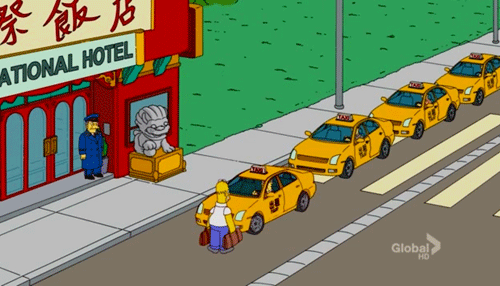
Earlier this week, the Awl posited how Uber might metastasize into mass transit and potentially privatize public transit along the way, at least in some cities. That piece found its way into Uber CEO Travis Kalanick’s Facebook Newsfeed, where he commented on the post of the person who shared it; a screencap of his comments was shared with us. We’re presenting it here because even though his comments were made in a limbo between public and private — someone’s Facebook wall — which makes us feel not a little weird to share it, Kalanick is possibly the single most important person in the world with respect to the future of transit, so we think people should be aware of his thinking on the matter:
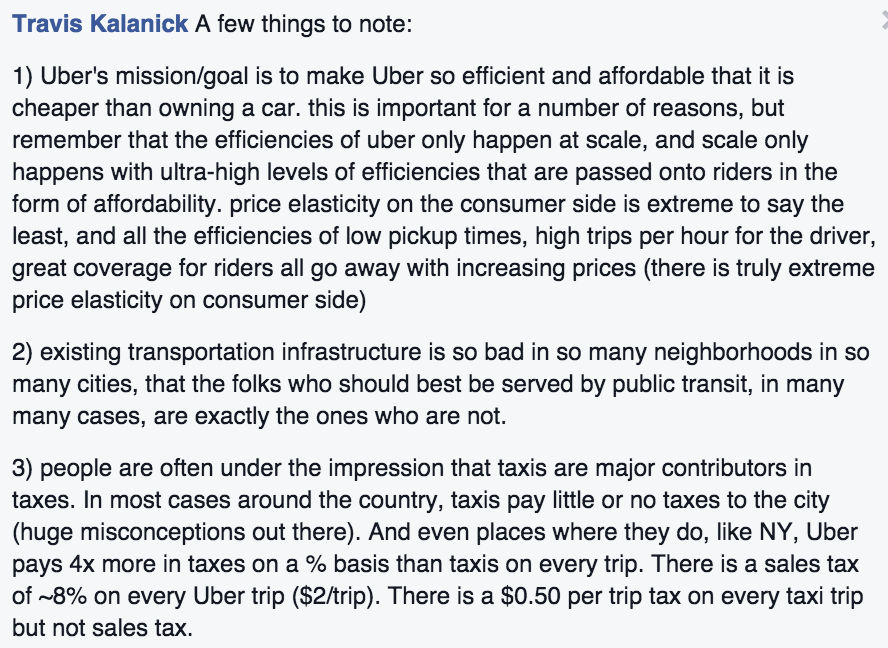
Points one and two speak for themselves — we agree! although it seems like many people who need public transit but are ill-served by it also probably can’t quite afford Uber yet, either? — but it’s worth looking more closely point three (which our piece didn’t really discuss, but anyway). Kalanick’s point is that Uber pays, on average, four times the taxes that a yellow cab does on a per trip basis. This is a very specific word choice! (The implication though, I believe, is that Uber is in fact better at funding public transit than yellow cabs.) That assertion, which the Uber NYC Twitter account also made a few days ago, is based on two things: a fifty-cent surcharge on every yellow cab ride, and the approximate eight percent sales tax on every Uber trip, which, according to Uber, averages out to two dollars per ride.
Uber riders pay 4X the taxes per ride compared to taxi + have generated ~$40 million in tax revenue so far this year. pic.twitter.com/QlkaLyj4KB
— Uber NYC (@Uber_NYC) August 24, 2015
But let’s break it down more finely. Uber-affiliated cars are classified as for-hire vehicles, which must pay an 8.875 percent sales tax on every ride: 0.375 percent goes to the MTA; 4 percent goes to the state, and 4.5 percent goes to the city. Additionally, for-hire vehicles pay a yearly $400 Commercial Motor Vehicle Tax.
As for yellow cabs, there is 50-cent tax on every trip that goes directly to the MTA — plus an annual $1000 Commercial Motor Vehicle Tax. Green cabs — Boro Taxis that only operate in the outer boroughs and the fringes of Manhattan — split the difference, with the 50 cent MTA tax and an annual $400 CMVT.
The TLC pegs the current number of yellow cabs plus green cabs at 21,639 — of which 13,587 are yellow cabs, which suggests there are 8052 or so green cabs. (The TLC was authorized to license up to 18,000 green cabs at a rate of up to 6,000 per year.) The TLC puts the number of for-hire vehicles — which includes liveries, black cars, and limos — at about 65,754, or roughly three times the size of the combined cab fleet. (Uber has approximately 20,000 cars.) For the calendar year 2015, the TLC is projecting $94.61 million in tax revenue from yellow cabs and $11.48 million from green cabs — $107 million, all told — and $156 million in tax revenue from for-hire vehicles.
In other words, it takes three times the number of for-hire vehicles to produce one-and-half times the tax revenue of cabs. Or, to crudely estimate from these TLC numbers, an average yellow cab brings in $6900 in tax revenue, while an average for-hire vehicle brings in $2372 in tax revenue. (Of course, the easy counter-argument is that there will be — and should be — so many for-hire vehicles making so many trips so efficiently that overall, revenue will grow. And sure, why not?)
But in one sense none of this matters! What’s going to happen next is so predictable it borders on inevitable: In its aggressively matter-of-fact tone, Uber will slowly open up and present its case, increasingly transparently, as the next iteration of mass transit, one that can and will replace much of the transit infrastructure we have now, from taxis to buses. Cities will continue to resort to vague and defensive arguments against that case, and they will probably lose.
What a Pack of Cigarettes Costs, in Every State
by Helen Holmes
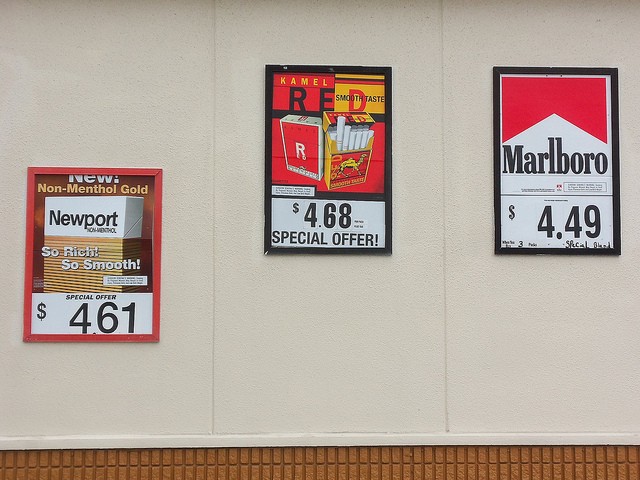
Every summer since 2011, The Awl has divined the price of a pack of Marlboro Red cigarettes by calling a convenience store in every state in America because — here’s a definitive fact for you — cigarettes are cool. Certain editors at this publication may currently be inclined to say otherwise due to old age, but cigarettes are amazing. They look great dangling from your lips outside a party, they feel smooth and comforting between your fingers on the long walk to a final exam, they taste amazing after two drinks. (I will concede that I once tried to smoke a cigarette after breakfast and almost threw up. Nobody’s perfect!)
Cigarettes are also expensive, especially in New York, where they are the most expensive. They are cheapest in Virginia, where the price has once again dipped below five dollars per pack, so you are welcome to uproot your life and move there, where you can smoke sixty cigarettes a day and die gasping in the Great Dismal Swamp instead of shelling out for juice cleanses.
According to a recent report from New York’s Independent Budget Office, smoking rates in New York have steadily increased since 2010, “in tandem with declines in spending on tobacco control programs.” This suits me fine, as New York has always hovered in my mind’s eye as a perpetually steaming metropolis, haunted by smokestacks imprisoned in human bodies. Also, vaping sucks.
As always, YMMV.
49. Virginia: $4.98 / Last year’s price: $5.25 / -5%
48. North Dakota: $5.10 / Last year’s price: $5.33 / -5%
47. Georgia: $5.14 / Last year’s price: $6.39 / -20%
46. Wyoming $5.45 / Last year’s price: $5.41 / +1%
Tied with: Kentucky $5.45 / Last year’s price: $5.40 / +1%
45. West Virginia $5.52 / Last year’s price: $5.43 / +2%
44. Idaho $5.61 / Last year’s price: $5.41 / +4%
43. Missouri $5.64 / Last year’s price: $5.25 / +7%
42. Tennessee $5.70 / Last year’s price: $5.30 / +7%
41. Oklahoma $5.71 / Last year’s price: $6.29 / -10%
40. Mississippi $5.75 / Last year’s price: $6.34 / -10%
39. South Carolina $5.91 / Last year’s price: $5.58 / +6%
38. Colorado $5.93 / Last year’s price: $5.65 / +5%
37. Alabama $5.97 / Last year’s price: $5.51 / +8%
36. Oregon $6.06 / Last year’s price: $5.69 / +6%
35. Louisiana $6.07 / Last year’s price: $5.44 / +10%
34. Delaware $6.08 / Last year’s price: $6.35 / -5%
33. North Carolina $6.12 / Last year’s price: $5.45 / +11%
32. Iowa $6.18 / Last year’s price: $6.29 / -2%
31. Indiana $6.26 / Last year’s price: $5.97 / +5%
30. Nebraska $6.32 / Last year’s price: $6.23 / +2%
29. New Hampshire $6.44 / Last year’s price: $6.44 / 0%
28. South Dakota $6.49 / Last year’s price: $6.08 / +6%
27. Montana $6.63 / Last year’s price: $6.46 / +3%
26. Michigan $6.64 / Last year’s price: $8.00 / -17%
25. Ohio $6.69 / Last year’s price: $6.03 / +10%
Tied with: Texas $6.69 / Last year’s price: $6.69 / 0%
24. Maryland $6.78 / Last year’s price: $7.75 / -13%
23. New Mexico $7.01 / Last year’s price: $7.67 / -9%
22. Kansas $7.02 / Last year’s price: $5.83 / +7%
21. Pennsylvania $7.04 / Last year’s price: $6.85 /
20. Arkansas $7.09 / Last year’s price: $6.07 / +15%
19. Utah $7.12 / Last year’s price: $6.89 / +3%
18. Maine $7.47 / Last year’s price: $7.37 / +2%
17. Arizona $7.75 / Last year’s price: $8.05 / -4%
16. California $7.81 / Last year’s price: $5.89 / +15%
15. Hawaii $8.02 / Last year’s price: $9.55 / -16%
14. Wisconsin $8.06 / Last year’s price: $8.82 / -9%
13. Minnesota $8.36 / Last year’s price: $8.10 / +5%
12. Washington, D.C. $8.39 / Last year’s price: $7.99 / +5%
11. Florida $8.40 / Last year’s price: $6.30 / +15%
10. Connecticut $8.53 / Last year’s price: $9.52 / -10%
9. New Jersey $8.60 / Last year’s price: $8.20 / +5%
8. Nevada $8.64 / Last year’s price: $6.15 / +29%
7. Vermont $9.02 / Last year’s price: $9.62 / -6%
6. Rhode Island $9.13 / Last year’s price: $8.95 / +2%
5. Washington $9.22 / Last year’s price: $9.30 / -1%
4. Massachusetts $10.53 / Last year’s price: $9.95 / +6%
3. Alaska $13.10 / Last year’s price: $9.79 / +25%
2. Illinois $13.25 / Last year’s price: $11.50 / +13%
1. New York $13.50 / Last year’s price: $12.85 / +5%
Average price $7.26 / Last year’s average price: $7.03 / + 3%
Photo of a better time and place by Daniel Oines
Everything Is Bullshit: Study
• “A major investigation into scores of claims made in psychology research journals has delivered a bleak verdict on the state of the science. An international team of experts repeated 100 experiments published in top psychology journals and found that they could reproduce only 36% of original findings. The study, which saw 270 scientists repeat experiments on five continents, was launched by psychologists in the US in response to rising concerns over the reliability of psychology research,” the Guardian reports.
• “The vetted studies were considered part of the core knowledge by which scientists understand the dynamics of personality, relationships, learning and memory. Therapists and educators rely on such findings to help guide decisions, and the fact that so many of the studies were called into question could sow doubt in the scientific underpinnings of their work,” notes the New York Times.
• “It’s almost like nothing is real and even the things you once thought were true turn out to be just another empty promise, like love, like life itself. The only thing about which we can be certain in science — in anything, really — is that we are all a collection of atoms spinning about without real purpose and we are each accorded our little amount of time on this earth and then we return to the void whence we came having done little, meant less and, in the scheme of things, been negative space. Everything is black and the black creeps back in no matter what you do to convince yourself there’s light there. These things that seem so important to you are worthless. There’s no hope. It’s a short ride in a fast machine through a dark empty valley and the speed of the trip makes us think we’re seeing things outside but really we’re rolling past nothing, coming from nothing, on the way back to nothing. I’ve wasted my life, but then all lives are wasted,” remarks an observer.
• “[Study leader Brian] Nosek believes that other scientific fields are likely to have much in common with psychology. One analysis found that only 6 of 53 high-profile papers in cancer biology could be reproduced and a related reproducibility project in cancer biology is currently under way. The incentives to find results worthy of high-profile publications are very strong in all fields, and can spur people to lose objectivity. ‘If this occurs on a broad scale, then the published literature may be more beautiful than reality,’” Nature declares.
New York City, August 26, 2015

★★★★ In the shade, the early temperature was somewhere between relatively cool and absolutely so. The sun established itself, and established some heat with it, provisionally. There in the open and down in the still-choking subway were summer’s redoubts; by late day, with the sun up in the treetops and the heights of buildings, scattering window reflections, there was only the subway. A plain straight railing atop a walkup building was a streak of fire. The tiresome rumble of the air conditioner could be turned off and the windows opened, to let in the breezes and sirens of night.
Everybody Is Flipping Out, Man
by Brendan O’Connor
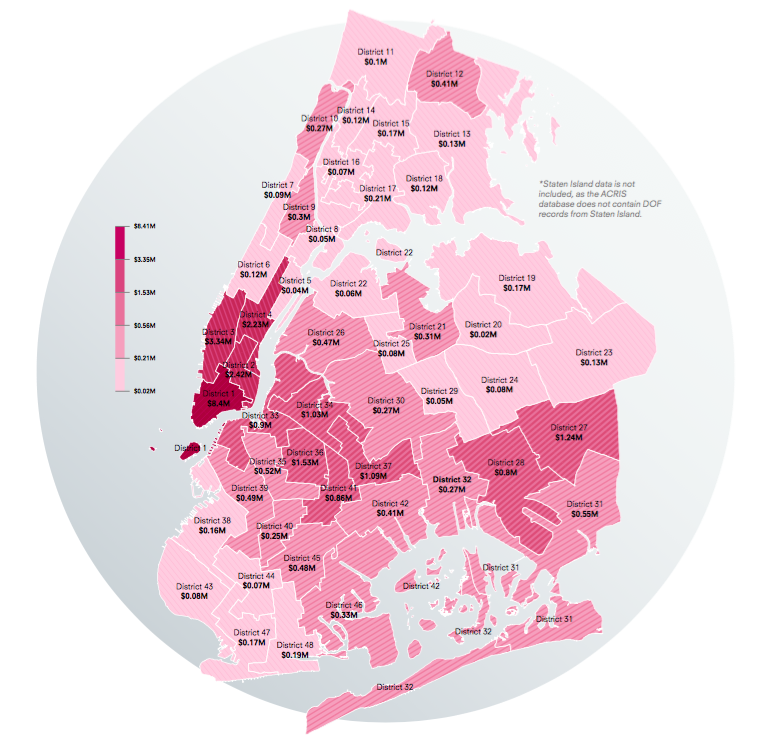
Distribution of a proposed one percent sales tax on flips in 2014
In real estate, “flipping” is the practice of buying a piece of property and then selling it a short time later, often having renovated, rehabilitated, or otherwise upgraded it to increase its value. Despite being a risky and expensive proposition, this kind of thingprac happens all over the country. According to real estate analytics firm RealtyTrac, nationally, the average return for investors on a house flip in the first quarter of 2015 was 35.1 percent, up from thirty-five percent at the same time last year; returns on flips in the New York and New Jersey metro area — where flips made up 3.7 percent of all sales — however, were even greater: investors saw an average return of 47.1 percent in the first quarter of this year.
New York City’s most successful flip last year, the Post reported in December, was a one-bedroom, one-bathroom apartment on the Upper West Side purchased for just under two hundred and seventy-five thousand dollars in February; it was resold in September for nearly eight hundred and ninety thousand dollars. “The best neighborhoods for profitable flipping are those that come with a higher risk because of location and condition of properties,” Ivona Perecman, a luxury broker and real estate attorney, wrote in her summary of RealtyTrac’s analysis. Flipping is, in a word, speculation.
Earlier this year, housing activists in Philadelphia issued a proposal arguing for an increased tax on sales of properties that had been bought within the previous two years. They found that there were, in 2013, more than six thousand such transactions, largely concentrated in that city’s gentrifying neighborhoods. According to their proposal, increasing the Realty Transfer Tax by 1.5 percent would generate nearly twelve million dollars every year, which could be directed toward building affordable housing. Inspired by this, Caroline Woolard, an artist and activist in New York, recruited a group of civic hackers, architects, and designers to develop what has become the Landscapes of Profit: A map showing where flipping takes place in New York and how much money people are making off of it.
Defining a flip as any transaction of a property owned for two years or less, Landscapes of Profit found that twenty-three billion dollars worth of flipped properties have sold in New York City in the last decade. In 2014, flippers sold 3.4 billion dollars worth of real estate; in 2015, flip sales reached 1.8 billion as of May. The project also includes a proposal that a one percent tax be imposed upon such sales: Such a tax, had it been in effect in 2014, would have generated 33.7 million dollars. This would, Woolard and her colleagues contend, be sufficient to pay for the construction of more than one hundred fifty units of affordable housing.
The information upon which the map is built comes from the New York City Department of Finance and the Department of City Planning public databases. (The finance department’s ACRIS website is a searchable record of all property sales in the city.) “Right now we’re just trying to show and educate people that we do have this blight, you could say, or epidemic — or, at least, increase — in flips,” Woolard told me over the phone. “At the very least what we’re doing is telling people that we could start to think about how development does not have to come with displacement — that the people who bring value to their neighborhoods should be compensated for the decades of work they’ve done, when some people come and leave, and make a significant profit. At the very least, we’re educating people, and at the very best, we move to modeling and get this into legislation.”
The most comprehensive visualization of the data Landscapes of Profit has accumulated thus far is visible at the Storefront for Art and Architecture, where, on one wall, an enormous map displays some of the most profitable flips from the past year, focussing on council districts in Brooklyn and Queens. The group is working on an interactive map that will be released online in the next few weeks, which will (ideally) allow users to zoom in on particular blocks to see what is going on in their neighborhood, as well as print drawings to send to council members. “Until you get street names, it’s still a little bit too abstract for most people,” Woolard said.
“Once we have that, and we can say, ‘Hey, look at these flipped properties near you.’ Everyone wants to know that, regardless of whether a one percent flip tax is implemented,” Woolard said. Even — or, perhaps, especially? — those who are looking to get into speculation in the first place. “We have to make it even more overt as propaganda, because it’d be easy to say, ‘Hey, look at how much money is made on flipping — why don’t I learn how to do that?’ So, we have to think through all the ways that it will be used and be ready to combat them, or be intelligent about how we inform people of the ramifications of their desire to make money.”
In New York City, the highest concentration of flips over the last decade took place in the city council districts comprising Lower Manhattan (District 1), Hell’s Kitchen and Chelsea (District 3), and the east side of Manhattan from the Upper East Side to Stuyvesant Town (District 4). A one percent tax on flips in District 1 would generate 8.4 million dollars; in District 3, 3.3 million dollars; in District 4, 2.2 million dollars. As expensive as Manhattan is, and as much revenue as flipping there can generate, the barrier to entry is high — inventory is also declining, having peaked in 2007. “This years-long deficit is unlikely to be corrected in a single year, leaving Manhattan homes in relatively short supply in 2015,” according to Streeteasy’s Trends & Data blog. “Across the East River in Brooklyn and Queens, however, inventory is poised to grow considerably. In 2014, the number of homes for sale in Brooklyn and Queens grew by 8.6 percent and 8.5 percent, respectively. We expect this growth to carry through in 2015. With buyers squeezed out of the Manhattan market, expect many of them to look eastward in 2015.” Last year, Council District 36, covering Bedford-Stuyvesant and northern Crown Heights, saw a hundred and fifty million dollars in flip sales, which would generate a 1.5 million dollars in tax revenue.
One of the troubles with a proposed one percent tax on flips is figuring out how to structure it in such a way that it doesn’t just create readily accessible loopholes — the most obvious one in Landscapes’ current proposal is that, if a “flip” is defined as a sale made within twenty four months of purchase, some people will just wait twenty five months before conducting their sale. “We could model that and see what people would tend to do, and then we would know exactly how much revenue we could expect,” Woolard said. “Because it’s not going to be applied retroactively. So we also have to give it teeth by knowing these kinds of properties would be likely to just pay the one percent rather than wait, and these properties would wait. Once we know that, we can actually go forward and talk to policy makers and legislators who know how to make policy that actually works.”
But policies that raise taxes on the wealthiest Americans — even in New York — that “actually work” are difficult to come by. There already exists a one percent tax, introduced in 1989 by then-Governor Mario Cuomo, on the sale of homes in New York over one million dollars — the so-called “mansion tax” — which, in the 2012–2013 fiscal year, generated two hundred and fifty-nine million dollars in revenue. (A Columbia study found last year that the tax created “a substantial bunching of transactions right below the $1 million level.”) In the spring, Mayor De Blasio proposed a new, additional one percent tax on the sale of homes between 1.75 million and five million dollars, as well as a 1.5 percent tax on sales greater than five million dollars. The tax would raise roughly two hundred million dollars per year in revenue that would be funnelled directly into affordable housing. The proposal, which became a bargaining chip in negotiations in Albany earlier this summer over tax breaks for developers, did not pass. (New York City’s taxes are determined by the state legislature.)
Meanwhile, a Supreme Court ruling in Maryland appears to have limited the city and state’s capacity to levy a proposed pied-a-terre tax on apartments valued at five million or more, owned by absentee landlords. A year and a half earlier, in a story about Australians investing in Bushwick (which saw a hundred and ten million dollars in flips in 2014), a Douglas Elliman broker told the Times, “I’d say by the spring, maybe 70 percent of the sales we were seeing were to hedge funds, investors and others taking advantage of what was happening in Brooklyn… Only about 30 percent were actual end users or first-time buyers.”
In Search of the Greatest Rum Cocktail Ever Made
by Awl Sponsors
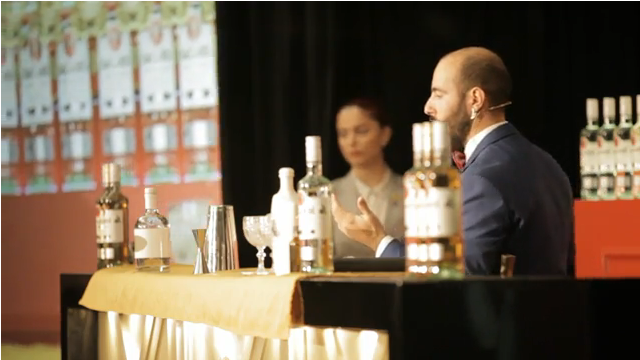

Welcome to the competitive cocktail circuit, where the world’s best mixologists unite with a singular goal: to develop the world’s perfect rum cocktail. In the video below, host Chris Kevin takes us on a journey through the exclusive and mysterious world of the Bacardi Legacy Global Cocktail Competition to find the world’s best Bacardi rum cocktail — and mixologist.
In front of an audience of the most exacting critics and judges, cocktail makers from Singapore to Ireland present their legacy rum cocktails. Each presentation calls for a description of the drink’s theme, followed by a live demonstration and tasting of the signature cocktail.
Can one intrepid mixologist make a drink that rivals famous forbears such as the mojito or daiquiri? Watch the video to find out.
The Traffic King of Reddit
by Brian O’Connor

Last week, while avoiding work, I stared at a gif of an endless model train spiral for what seemed like hours, transfixed by the constant, seamlessly looping stream of miniature carriages, moving without end, going nowhere, yet constantly in motion. It’s one of thousands of Reddit posts I’ve seen from GallowBoob without knowing who he was or how he appeared on the site so often; if I had gone anywhere else on the internet to procrastinate, odds are, I’d still be looking at something he made popular first for millions of internet users around the world.
With more than 5,546,795 link karma (Internet points given for posting popular content), GallowBoob is Reddit’s top curator of gifs, photos, videos, and clickable material. The average karma count for active users is just over thirty-one thousand (as measured back in 2011, when the number of users was far lower than it is today), and with a mere twenty-five slots on the front page reserved for the most popular content, few users ever get their posts within spitting distance. Getting to the front page for a typical user is a rare, serendipitous occurrence, if it ever happens at all. GallowBoob’s posts make it to the site’s front page on a near-daily basis, which means that the material he shares helps determine the viral content that spreads across the entire web.
GallowBoob’s power is odd and largely invisible — he has done little to acknowledge or capitalize on his influence, and most casual Reddit readers don’t know his name — but his most popular posts reach can receive more than sixty-five hundred upvotes, and six of his links appeared on the site’s homepage last Saturday alone. A landscape architect by trade, and a child of the Lebanese Civil War by circumstance, GallowBoob is the anonymous patient zero behind a great deal of viral content in your Facebook feed — the accidental curator of a stream that largely defines the boundaries of a hyper-competitive landscape of web publishing in 2015. Upworthy, Gawker, BuzzFeed, and countless smaller viral content sites are all influenced by Reddit’s highly ranked original and re-aggregated content. But GallowBoob doesn’t see himself as an internet tastemaker, much less a content curator for the internet at large. “I wouldn’t want to say that it’s just about picking stuff and taste, because I’m exposed to a lot daily and I definitely get to choose what I want to draw [from]. Granted some posts don’t make it, but a ridiculous amount of stuff does,” GallowBoob told me via Google Hangout, speaking under the condition of anonymity (as he deals with increasingly irate users).
Reddit thrives on submissions from anonymous users, and the uncompensated work of its army of moderators. Their contributions to the site have catapulted a wonky, oft-ignored panoply of post-driven message boards into the tenth biggest website in the United States. Despite knowing that other large sites often take advantage of the content GallowBoob freely posts, he isn’t bothered. “I don’t want to be attacking specific magazines or anything, but I see that,” he said. “You have these websites that deal with culture and politics, let’s say, and then they plug stuff that has nothing to do with that because they want to get clicks. I understand — a puppy that’s cute — that wasn’t the deal before, but now it gets you clicks. I don’t think it angers me in any way, because people are people and they just want what’s best for them right now, and they’re not going to try to think for later on.”
If GallowBoob doesn’t seem defensive or territorial about the content he posts, it’s because he has a sense of self-awareness about being a content aggregator for a site built for aggregation — though perhaps deeper and more diverse than the sites like Digg and del.icio.us that came before it, Reddit’s strength lies less in its ability to create new material from the ether than in its power to give interesting material from niche sources a larger platform. Every piece might not be original, but neither is every wire story from the AP or Reuters. Breaking news rarely means making news, and if anything, Redditors seeking karma from unexplored Tumblr, Vine, and YouTube accounts serve as loudspeakers in ways that are, if you squint hard enough, not too dissimilar from stringers in a newsroom. To make it to the front page, you have to head toward undiscovered, unfamiliar areas of the web — diving ever deeper to get noticed for something fresh and interesting. “I try to not share anything that’s been shared before on Reddit for the sake of not bringing down the fresh content pool,” GallowBoob says. “The more you’re going to recycle old stuff, the less new stuff there is.” (Redditors might take issue with this assertion; there are complaints he in fact snags much of his content from other Reddit users. In a recent Ask Me Anything thread, GallowBoob tried to address questions about his sourcing for non-original content: “I am not able to fully track down the source 100 percent of the time, sometimes it’s harder than you think. Reddit always tends to support me in that. Anything that isn’t sourced by me will be sourced in the comments by someone else. And I’ll get sacked for it, but it’s fine, I can take it.”)
GallowBoob’s satisfaction with getting rewarded solely in imaginary internet points is a rarity in the world of self-made content kings and queens. During Digg’s heyday in 2008, user MrBabyMan — Los Angeles-based film editor Andrew Sorcini — held similar clout at the social sharing site that propelled websites (and covert advertisements) into viral nirvana. At his peak, Sorcini had over twenty-four hundred articles land on Digg’s homepage, garnering fifty million pageviews for the sites to which he linked. In time, other Digg users accused Sorcini of stealing content, egging on friends to vote for articles, and circumventing the site’s code of conduct.
The movement that exposed Sorcini has parallels with smaller subreddits that call out high-power Reddit users as “karma whores.” Subreddits dedicated to complaining about other Redditors feature perennial conversations about GallowBoob and his content, complaining about his prolific posting to the site’s highest-trafficked subreddits and the popularity his posts garner. In these corners of the site, users of GallowBoob’s stature are frowned upon for diminishing the quality of the site (well, except for the supposed bot that posts porn exclusively. No one seems to mind those posts). “Once or twice, actually, people have told me that what I’m doing is bad for the site, but it’s a big, big place,” GallowBoob told me. “Basically, they’ve said it’s bad because people who create content get swallowed up, but that’s not the case — [Reddit’s] big enough to cater to everyone. One user can’t affect it that way.”
In Reddit’s first ten years of operation, it has accumulated thirty-six million user accounts, more than eight hundred and fifty-four thousand subreddits (just over nine-and-a-half thousand are active), and just over seven and a half billion pageviews per month. Condé Nast had acquired it in 2006 for an undisclosed sum reported to be as much as twenty million dollars (or as little as five)*; during a funding round in 2014, it was valued at half a billion dollars, and it has only sixty-five employees. This makes the free army of editors, curators, and writers that are embodied in Reddit’s user-base all the more tempted to turn their free labor into a paid opportunity through advertising and shameless plugs for products. There’s a bumper crop of websites selling upvotes, user accounts with high karma ranks, and methods that detail how Reddit can be used for free (or at least organic-looking) promotion.
Prior to Digg’s 2010 implosion, top users were accused of selling their prestige to marketers — often asking for as much as twelve hundred dollars for making it to the site’s homepage. In 2010, Reddit user Saydrah was outed for cashing in on her popularity and moderator status at the popular r/pics subreddit; users organized to strip her of power and effectively shun her from the site. GallowBoob is reluctant to cash in on the prominence he’s garnered on the site: “Take the Fat Jew on Instagram, for example: that guy fed off of Reddit entirely, but he was able to monetize it and make a name for himself, and now he’s able to plug products and stuff. I haven’t done anything close to that.”
“It’s hard to say, ‘Yeah I can put anything on the front page.’ I can’t. That comes down to the content and the approach,” he said. “They really don’t like that corporate approach. I’ve had so many people approach me, asking me if I want to test their products. I told them — and to be honest with you, I should do it — I tell them that I would love to, but that I cannot put a specific product onto Reddit because it doesn’t work.”
GallowBoob has no further aspirations of being the king of the internet, either — or of Reddit, for that matter. “Considering I am spending my time on Reddit right now while also working on my personal projects, I would say once they go live, I’ll reduce my presence here gradually,” he said in a recent AMA. If he goes, so goes one of the sources that popularizes much of the web’s viral content. But as one anonymous cog in the internet content machine, it’s likely that few will even realize the impact of his departure. And it wouldn’t matter, either: For all the arguments over original content, reposting stolen story ideas, and rehosting content for clicks, people seem to neither know nor care where their viral videos, gifs, and images come from (as the success of The Fat Jew has shown). If graffiti is the purest form of art because it is done for neither fame nor profit, one must ask if this isn’t true for the pure-hearted content miners of the internet as well.
The small, endless model train began to symbolize a few things for me: at first it was a distraction from a tedious but necessary task — transcribing my interview with GallowBoob — but, as I thought about it, it began to mean so much more. Reddit’s anonymous userbase has the power to unleash wealth, fame, or ire within a moment’s notice. But for its top user, it’s a time waster in the form of a contest — one where the rules are made up, and the points don’t matter. Content, either new or old, becomes a car in an unending train on a spiral track, one that is propelled forward with no beginning, end, or destination.
* This piece originally totally misstated the acquisition price that Condé Nast paid for Reddit. We regret the error!
